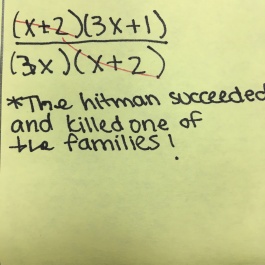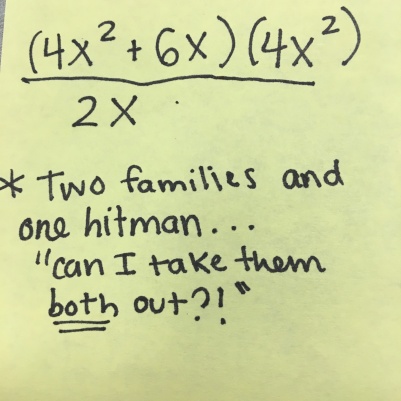My Algebra 2 class is largely student-paced through Desmos Activity Builder. Before starting polynomials, we did a small unit on solving quadratics. Below is a collection of Desmos activities I created for my quadratics unit and the start of my polynomial unit. A lot of these Desmos activities are created using CPM curriculum.
Quadratics
Quadratic Formula: Students review and practice using the quadratic formula (song included)
Using Roots to Create Quadratic Equations: Students learn how to use roots to create a quadratic equation.
Interactive: Using Roots to Create Quadratic Equations: Practice using roots to write quadratic equations by flying angry birds, catching Pokemon, and going scuba diving!
Projectile Motion – Quadratic Application: Students learn to apply their knowledge of quadratics for projectile motion problems.

Polynomials
Polygraph Polynomials (Jim Baumgart) – Started off playing polygraph to see what vocabulary they could apply before starting the unit.
What is your end behavior? : Students explore the beginning and end behavior of polynomials.
Graphing Polynomials: Students learn how to graph polynomials by using their roots and dilation/compression.
Match my Polynomial: Coaster Edition (Interactive): Match my polynomial – Roller-coaster edition. Students practice writing equations of polynomials with an added bonus 🙂



 d narrowed down the topics that they struggled with the most. I added in a few questions in verbally when I felt they got stuck or could push the topic further.
d narrowed down the topics that they struggled with the most. I added in a few questions in verbally when I felt they got stuck or could push the topic further. outside circle was discussing the questions on a back channel chat. They were writing down the topics that they needed to know/work-on and went into more detail about the concepts than the inner circle.
outside circle was discussing the questions on a back channel chat. They were writing down the topics that they needed to know/work-on and went into more detail about the concepts than the inner circle. ls at the bottom of your chat, it allows you embed the live stream or transcript to your page.
ls at the bottom of your chat, it allows you embed the live stream or transcript to your page. For this seminar, I had students switch circles for every chapter. I asked the same questions for each chapter. I had questions appear one at a time.
For this seminar, I had students switch circles for every chapter. I asked the same questions for each chapter. I had questions appear one at a time.



 g about killing off family members of the Mafia.
g about killing off family members of the Mafia.






 t to see if they discount remained the same!
t to see if they discount remained the same!


